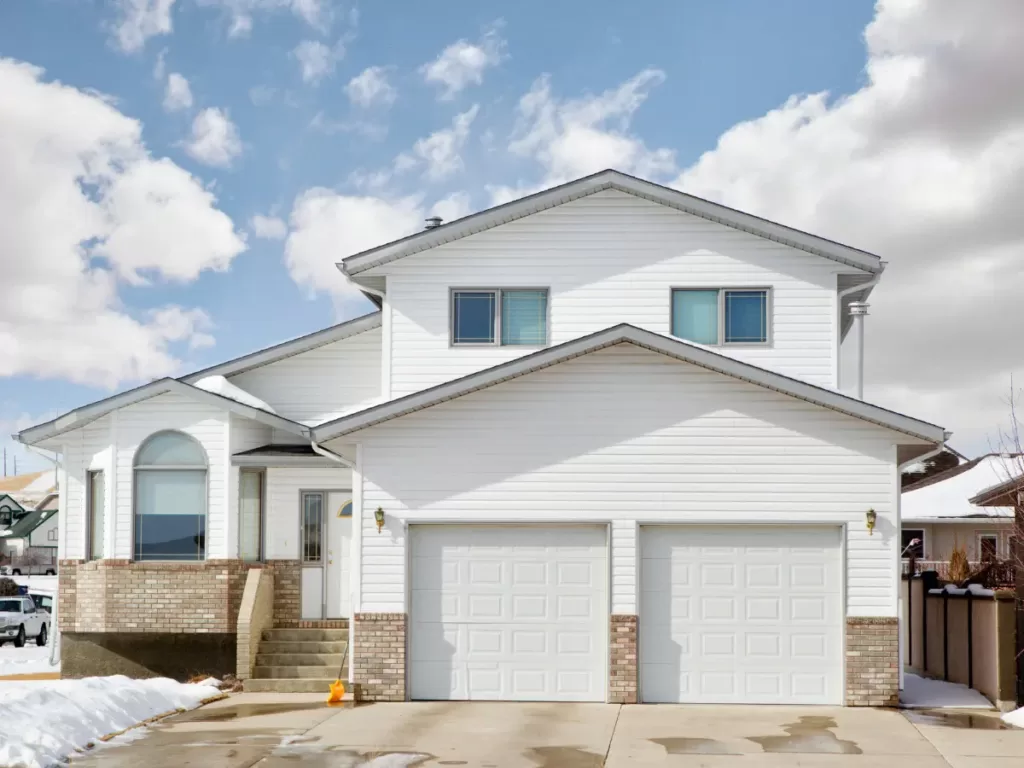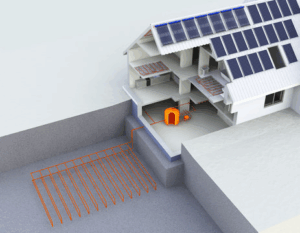In the fight against climate change, net zero homes have emerged as a remarkable solution, pushing the boundaries of energy efficiency and sustainability. But what does it mean, and how does one achieve it? Let’s dive in.
What is a Net Zero Home?

A net zero home is a residential building that generates as much if not more, energy than it consumes. This can be achieved using renewable energy technologies such as solar panels and geothermal heating and cooling systems.
A Closer Look at How Geothermal Systems Work
We need to start beneath the Earth’s surface to appreciate the science behind geothermal systems. The Earth’s internal heat is transferred to the surface by thermal conduction and convection, resulting in a relatively consistent underground temperature throughout the year, usually between 45°F (7°C) and 75°F (21°C), depending on the latitude. Geothermal systems tap into this reliable and consistent heat source for heating and cooling purposes.
A typical geothermal system consists of three main components: the ground heat exchanger, the heat pump unit, and the air delivery system. The ground heat exchanger is a series of pipes buried near the home, commonly called a loop. Depending on the available space, this loop can be installed vertically or horizontally. These pipes are filled with a heat transfer fluid (commonly a mixture of water and antifreeze).
Heating Mode
In heating mode, the fluid circulates through this loop, absorbing heat from the Earth and carrying it to the heat pump unit. The heat pump then extracts this heat and distributes it throughout the home using the air delivery system, often a system of ducts.
Cooling Mode
For cooling, the process is reversed. The heat pump absorbs heat from the home’s interior, transfers it to the fluid in the loop, which then disperses the heat into the ground. Hence, the Earth serves as a heat sink in summer.
Efficiency Unleashed
Geothermal systems are incredibly efficient because they move heat rather than generate it. According to the U.S. Department of Energy, geothermal heat pumps can achieve efficiencies of 300%-600% on the coldest winter nights, compared to 175%-250% for air-source heat pumps on cool days.
Another advantage of geothermal systems is their lifespan. The indoor components can last about 25 years, while the underground loop system lasts more than 50 years. This long lifespan, coupled with energy savings, makes geothermal systems a desirable option for homeowners aiming for a net zero home.
Though the initial costs of geothermal systems can be higher than traditional heating and cooling systems, the energy savings over time can make them a worthwhile investment. Federal, state, and local incentives can also help offset these initial costs, making geothermal systems more accessible to homeowners.
Harnessing Solar Energy for Home Use to Achieve Net Zero
Solar energy harnessing, especially for home use, has seen significant advancement. It’s a critical component in achieving a net-zero home, and understanding its functionality is vital to maximizing its benefits.
Solar energy harnessing starts with solar panels, often mounted on rooftops, for maximum sunlight exposure. Each panel comprises photovoltaic (PV) cells – semiconductors usually made from silicon. When sunlight hits these cells, the photons from the light stimulate the electrons in the silicon, initiating an electric current. This is known as the photovoltaic effect.
The electricity generated by the panels is typically in direct current (DC). However, most household appliances use alternating current (AC). Therefore, the DC electricity is converted into AC electricity via a device known as an inverter.
Solar panels are most productive when the sun is at its peak – usually in the middle of the day. However, energy demand can extend into the night when the panels aren’t producing electricity. This is where energy storage systems, such as solar batteries, become essential. These batteries store excess energy produced during the day for use during the night or during periods of high demand, ensuring a continuous power supply.
One of the attractive features of solar energy systems is the possibility of grid interconnection. In many regions, homeowners can sell excess electricity back to the grid, a practice known as net metering. It reduces energy costs and can lead to energy credits when more power is generated than used.
Combining Solar and Geothermal Power for Net Zero Homes

Combining solar and geothermal power systems can be a powerful approach to achieving net zero energy status in homes. Both technologies complement each other, providing a more balanced and stable energy supply throughout the year.
Take, for example, a scenario where a home is equipped with both a solar panel system and a geothermal heat pump. During the summer months, the solar panels can generate electricity during the day to power the home, with excess power stored in batteries for use at night. The geothermal system, on the other hand, can provide efficient cooling, taking advantage of the stable underground temperatures to dissipate heat from the home. Any excess power generated by the solar panels could also be used to power the geothermal system or be fed back into the grid, resulting in energy credits.
In winter, while the efficiency of solar panels might reduce due to fewer sunlight hours (shorter days), the geothermal system can take over, providing highly efficient heating. The heat pump draws heat from the ground and distributes it throughout the home. Solar panels can still contribute to the home’s energy needs during the day, reducing the load on the geothermal system and resulting in more efficient energy use.
Major Geothermal Projects in Alberta – Eavor-Loop
A groundbreaking geothermal project, valued at $10 million and currently being built in the heart of Alberta, is being celebrated as a significant innovation due to its independence from fracking or water and its zero greenhouse gas emissions.
Upon his visit to the construction site close to Rocky Mountain House, Alberta’s Infrastructure Minister Prasad Panda lauded the pilot project as a major turning point.
The project, known as the Eavor-Loop, is unique in its kind, according to John Redfern, the president and CEO of Eavor Technologies, which is headquartered in Calgary.
Geothermal energy, which is a sustainable form of energy drawn from the Earth’s stored heat, operates much like a radiator in this closed-loop geothermal project, explained Redfern.
He added, “We’re utilizing conventional components, but assembling them in an unconventional manner.”
He further explained, “For instance, our approach contrasts with standard practices. Generally, when drilling a well, the objective is to prevent intersecting another well. However, we aim for intersection in our operation… We commence a few kilometers apart, drill down a similar distance, then take a right turn and drill towards each other, connecting one well with the other, thus forming a massive U-shaped well.
“This technique essentially generates a radiator effect.”
The Eavor-Loop recently gained financial support of $1 million from Alberta Innovates and Emissions Reduction Alberta.
Rebates and Incentives
While the initial costs of installing solar and geothermal systems can be significant, the energy savings over time make them cost-effective. Additionally, homeowners can benefit from government incentives, rebates, and tax credits designed to encourage the adoption of renewable energy technologies. As part of the Canada Greener Homes Initiative, homeowners have access to federal grants and provincial grants and interest free loans up to $45K. New residential homes can save 25% of your CMHC premium through the CMHC Eco Plus program.



